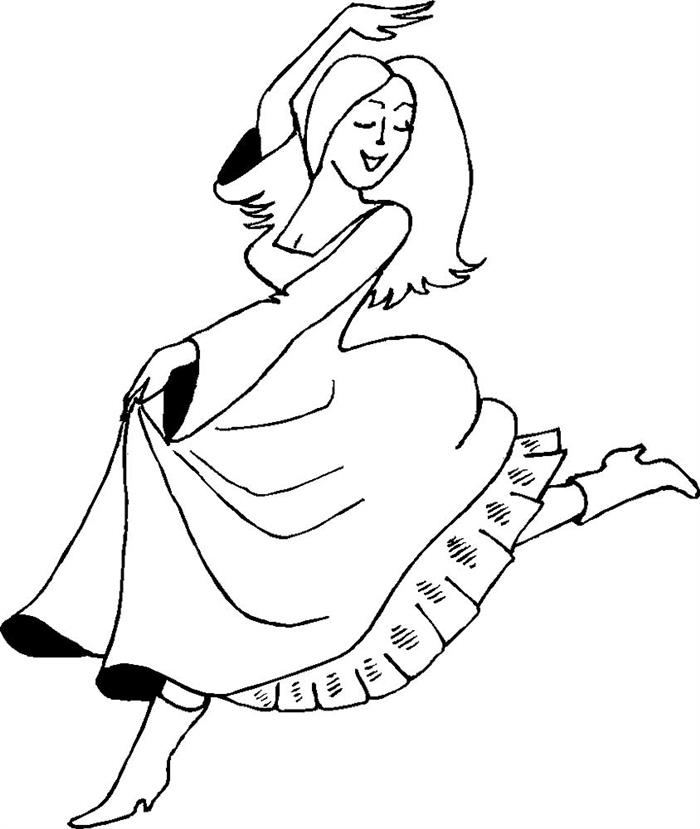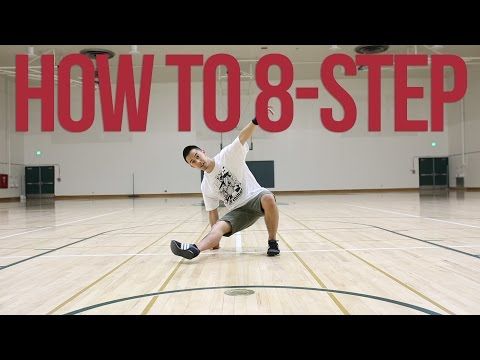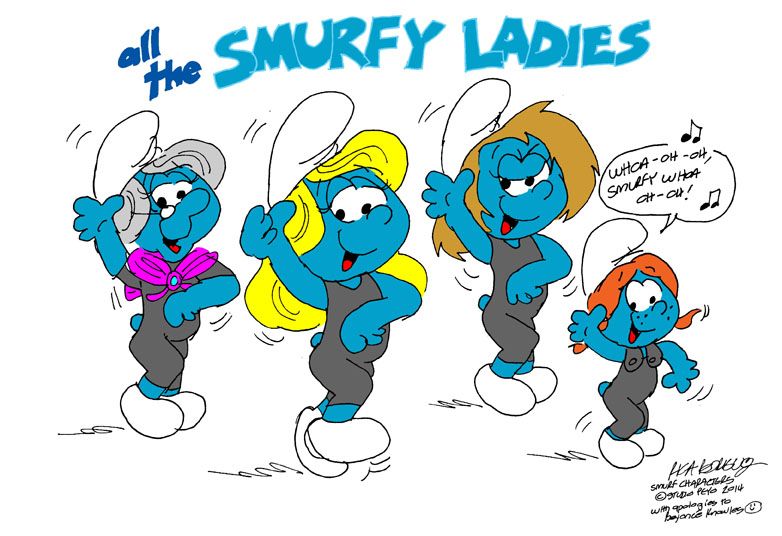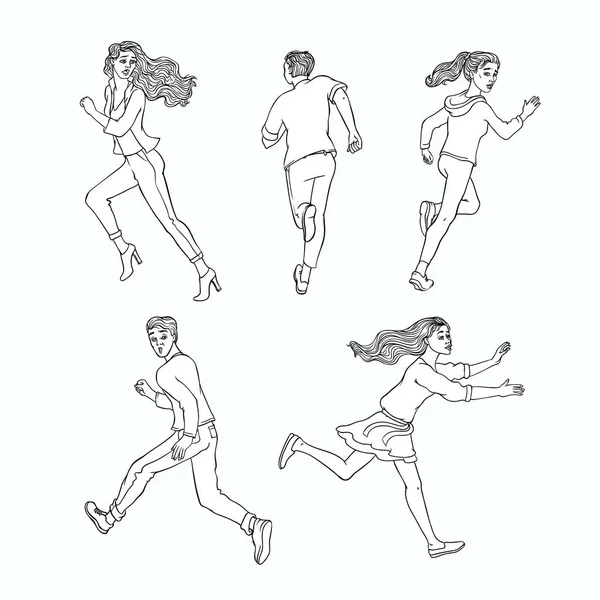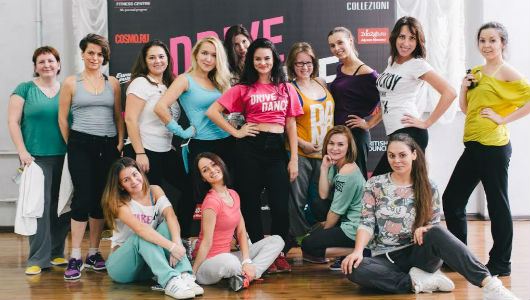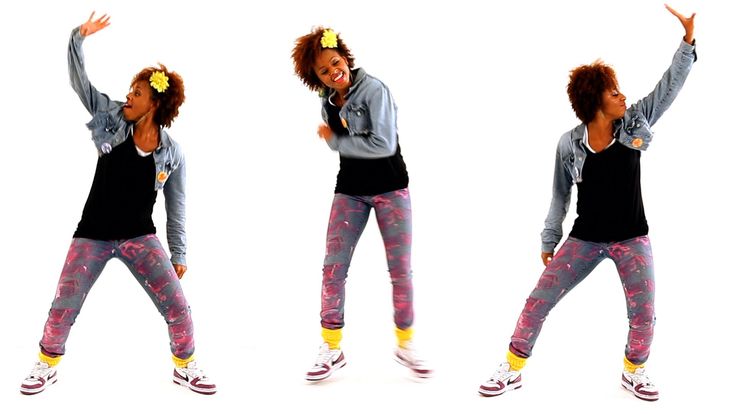How do you dance tango
Learn Basic Tango Steps
Tango, also referred to as the "Dance of Love", is a passionate and dramatic dance. It's a dialogue between partners, an expressive form of communication through movements.
- Basic steps
- Instructions & Diagrams
- Video
- Recommended Video Lessons »
Quick intro
Tango originated in the 19th century outskirts of Buenos Aires, Argentina. Since then it has grown into one of the most popular dances in the world.
It's somewhat different from other dances, especially traditional ballroom, but next in popularity behind waltz and foxtrot. Dissimilar to those two, it has no rise & fall, no swaying. It's known for quick, sharp movements and a catlike walking action.
Today, there are many styles of tango. You can dance the tango argentino, the ballroom tango, the finnish tango, the uruguayan tango, tango nuevo, vintage tango, and the chinese tango, among other styles. Although many different interpretations have appeared, the two main styles are the ballroom style and the Argentine style. The main difference between the two is that the second one has more sharp, staccato movements and the characteristic head snaps which are totally foreign for the dances coming from Argentine.
Tango is danced all around the world by people of all sizes and ages. Because the main requirement is walking, it is a dance for everyone. When it comes to Tango, the Zimbabwean proverb - If you can walk, you can dance – is absolutely on the spot.
Basic steps
Tango is a walking dance, meaning that all the steps are based on walking.
When you start learning it, you must first master some basic movements. Don't worry, basic steps are not that difficult to learn. Beginners usually start with 8-Count Basic or simply Tango Basic.
Tango Basic is made of five steps taken to 8 counts of music. The rhythm is slow, slow, quick, quick, slow. The slow steps consume two beats of music and the quick steps one. Tango music is usually written in 4/4 time (but also in 2/4 time) and played at a tempo of 30-33 measures per minute.
The slow steps consume two beats of music and the quick steps one. Tango music is usually written in 4/4 time (but also in 2/4 time) and played at a tempo of 30-33 measures per minute.
Instructions & Diagrams:
Tango is danced in a closed position, usually closer than in other dances. The man's left hand is holding the lady's right hand. His right hand is placed on her back, along the bottom of her ribcage. The lady's left hand is placed on his right shoulder. You always bent your knees. Remember, this dance is the most bent of all the ballroom dances.
The lead and follow mirror each others steps. The lead begins with the left foot, the follow with the right. Walks usually curve gradually to the left.
Basic Steps for Men
- Step forward with your left foot
- Step forward with your right foot passing the left foot
- Step forward again with your left foot this time passing the right foot
- Step forward and to the right with your right foot
- Left foot close to right foot
Basic Steps for Women
- Step back with your right foot
- Step back with your left foot passing the right foot
- Step back again with your right foot this time passing the left foot
- Step back and to the left with your left foot
- Right foot close to left foot
Video
In the following video Leon and Kim will show you slowly and from all angles how it's done. Ready, bend your knees, go:
Ready, bend your knees, go:
more videos »
If you found this lesson useful, you can find more of what we recommend here »
5 Argentine Tango Steps for Beginners — Ultimate Tango School of Dance
Tango has a rich history and background, originating in the late 19th century in the streets of Buenos Aires, Argentina, and Montevideo, Uruguay. It lets couples express their emotions through the fluidity of unique movements, setting it apart from other dances with a music style of its own.
When embarking on a journey, it’s often the first few steps that are the most important.
Like studying a new language, the best way to learn the Argentine Tango is to start with the basics and work your way from there.
It can seem daunting, but you’ll be surprised how mastering these 5 Argentine Tango steps will have you dancing in the right direction.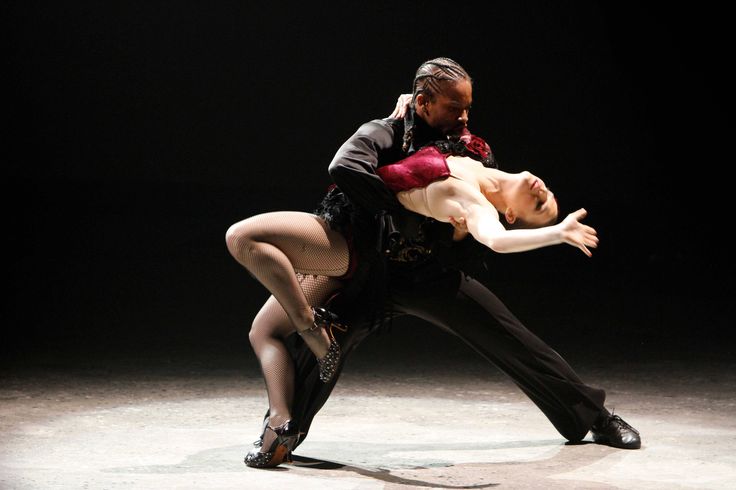
Tango instructors Diego Blanco and Ana Padron of Howcast executing a forward ocho.
First on our list is the Ocho, Spanish for "eight.” This is one of the oldest and most important basic figures in Argentine Tango. Tango was originally danced outdoors or in tango bars, where the ocho, but what appears to be an infinity sign, is drawn on the dusty floors by a couple facing each other, with one step in one way and the other step in the opposite.
There are many types of ochos, or figure eights, that may be led several ways,
as long as the knees remain soft and no unnecessary movements are made. These are the most common ochos with short descriptions from MasTango and Argentine Tango Lab:
Ocho adelante/defrente (forward/front ocho): Feet tracing a figure “eight” on the floor by the follower’s feet when she walks forward.
Ocho atrás (back ocho): Feet tracing a figure “eight” on the floor by the follower’s feet when she walks back.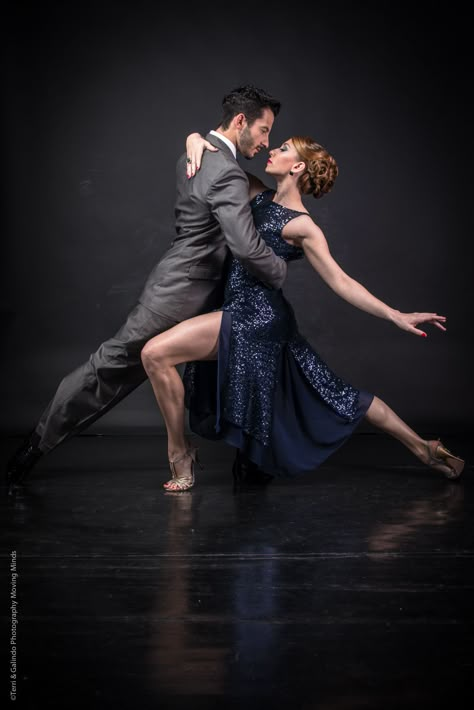
Ocho cortado (cut ocho/cut eight): Change of direction: Occurs when a forward cross within molinete or an ocho-like movement is stopped and sent back upon itself. Typical in social-style tango where many such ‘brakes’ or ‘cuts’ are used to avoid collisions. Describes a movement done on either foot, pivoting forward or backward, and going either left or right.
Ocho milonguero (non-pivot ocho/lazy ocho): Ochos led and followed without substantial torso and hip pivoting.
Ochos en Espejo (Ochos in the mirror): The leader and the follower execute forward or back ochos simultaneously, mirroring each other's movement.
For beginners, it is suggested to learn the forward ocho first, as it is incorporated into a variety of other figures. This is a simplified outline of the steps in the Forward Ocho from the Traverse City Tango Club’s notes:
The Forward Ocho consists of a front cross step (follower steps between and perpendicular to the line between the partners), followed by a half-turn pivot to repeat a front cross with the other foot in the opposite direction. The important thing to notice here is that one needs a combination of TWO crosses to create ONE ocho!
The important thing to notice here is that one needs a combination of TWO crosses to create ONE ocho!
A front cross like the Ocho Adelante can be initiated from almost anywhere. But the two common starting points for beginners who are learning Argentine Tango are from the Cross (step 5 in the Basic Eight) and from step 2 in the Basic Eight.
To exit from the front Ocho, the easiest way is to stop one of the pivots at a quarter turn. This is to come into the position where the follower is facing the leader.
Giro/MolineteHear Anita’s explanations walking us through a Molinete.
Giro (pronounced "hero"), Spanish meaning turn, is also known as the Grapevine because it resembles a chain of steps strung together by the leader and follower. It is also called Molinete, which translates to "windmill" in English, since, like a windmill has four wings that turn one way or the other and change direction with the change of the wind, this figure has four steps wherein the pattern travels in one direction, continuously repeating the same four steps in the same order until. .. the wind changes it. I mean, the leader changes it.
.. the wind changes it. I mean, the leader changes it.
The molinete can be danced in a circle or in a line, but the principles and the mantra-like repetition of four steps remain the same.
It starts with a combination of side steps, back steps, side steps, forward steps, side steps, back steps, side steps, and so on. It is, however, more than just a set of steps to be memorized. It is a vital technique for improvising spins, pivots, and maneuvers on the dance floor, and is arguably the richest figure in Argentine Tango due to its various modifications.
As explained by Tango Principles, the molinete can also be "straightened out" and used for corridas (runs). The most common timing of the molinette is the slow-quick-quick-slow for the slow back cross, quick side step, quick front cross, followed by a slow side step.
Another way of looking at it is that the side step that follows the back cross is the only step in the sequence that falls on either 2 or 4 in the music.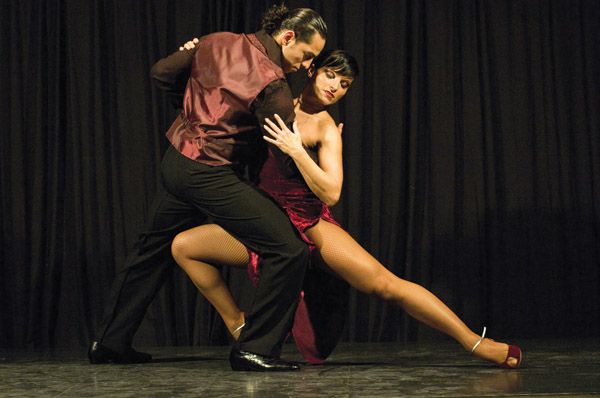 Everything else is either 1 or 3. But the molinete can also be done with a slower timing – all on the 1’s and the 3’s – or with a faster timing – on the 1-2-3-4-1-2-3-4, etc. A clear lead is required for both of these, for by default most women will do the quick-quick-slow.
Everything else is either 1 or 3. But the molinete can also be done with a slower timing – all on the 1’s and the 3’s – or with a faster timing – on the 1-2-3-4-1-2-3-4, etc. A clear lead is required for both of these, for by default most women will do the quick-quick-slow.
Third, we have the fun-loving sacada, from the Spanish word "sacar," which means "to take out" or "to take away."
Also known as a displacement, it is a distinctive foot and leg play seen in tango but not in any, other dances.
Sacada has many variations, but it's best to learn the simple sacada forward before progressing to back sacadas. It’s usually done to follower's front cross or sidestep when one partner (usually the leader) seemingly pushes the partner's unweighted leg out of its original position by merely pretending to touch, push, or kick it to immediately take that void with a quick transition of weight and light touch to the foot, thigh, or calf, but never with the ankle or knee.
Below, Planet Tango elaborates on the 3 types of Sacada, but there is more and we described it HERE
A Front Sacada
A typical front sacada can take place [in] her forward motion, entering in parallel or crossed-leg fashion, that he may enter with either his right or left leg.
In the illustration, the position of the legs follows the alignment of the upper torsos in Body Position 6, that is, her right breast is lined up with the center of his chest so the shoulders are at an approximate 45 degree angle to each other.
As he marks a forward step, he receives her motion with his right foot reaching past the front of her left shoe, touching the floor mostly with the inner edge of his shoe. Her weight is evenly distributed between both legs, so she is in the middle. His weight is also evenly distributed, so he is also in the middle.
To execute the displacement, he transfers his weight forward to his right foot, bringing his body forward as he begins to rotate his torso to his right.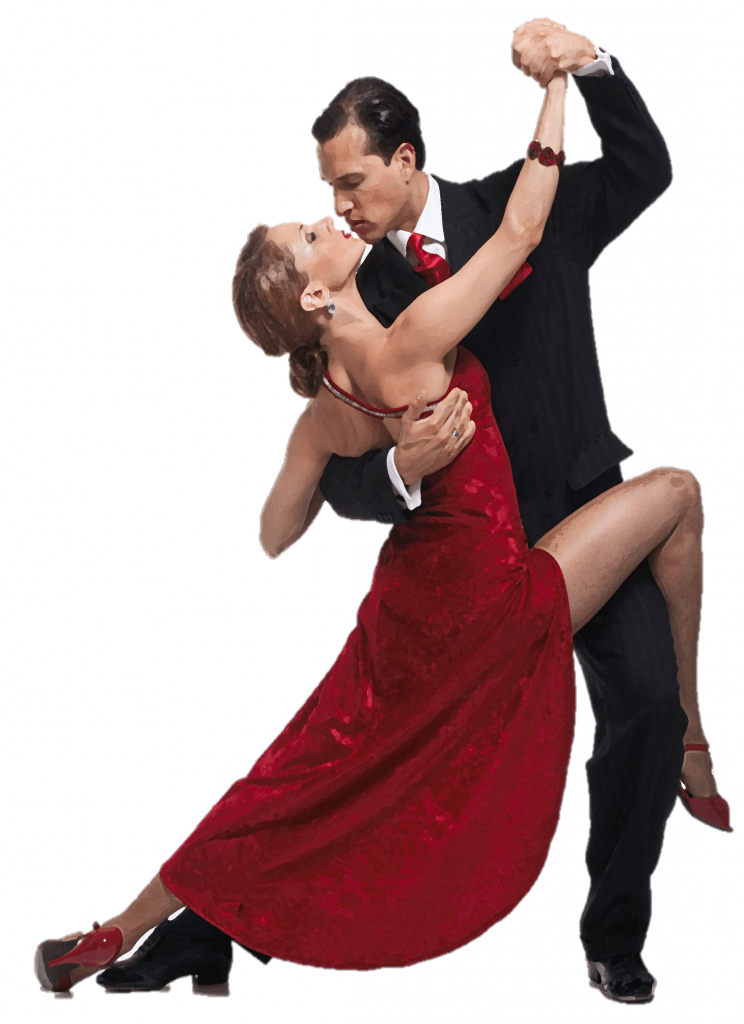 The resulting effect is that the motion of his body forward and the rotation of his torso, provokes a transfer of her weight to her front leg, a rotation of her torso to the right over her right leg, and a displacement of her left leg as his right leg occupies the space that her left leg was occupying.
The resulting effect is that the motion of his body forward and the rotation of his torso, provokes a transfer of her weight to her front leg, a rotation of her torso to the right over her right leg, and a displacement of her left leg as his right leg occupies the space that her left leg was occupying.
Side Sacada
A typical side sacada opportunity occurs when the bodies are aligned in Body Position 8, both shoulders in line facing in the same direction.
The man receives the forward step of the lady with the opposite leg. That is, if she is moving forward with her left, he creates the displacement with his right.
Back Sacada
To execute a back sacada, he needs to position himself in such a way that he steps back into the direction in which she is traveling.
This will require a double step action so his support leg will travel with her opening leg and as she sets foot on the ground, he backs into her path with his free leg.
Once his metatarsus [is set] firmly on the ground, he elongates his calf to allow his heel to settle down on the floor bringing his body over and producing contact with her leg and displacing her body.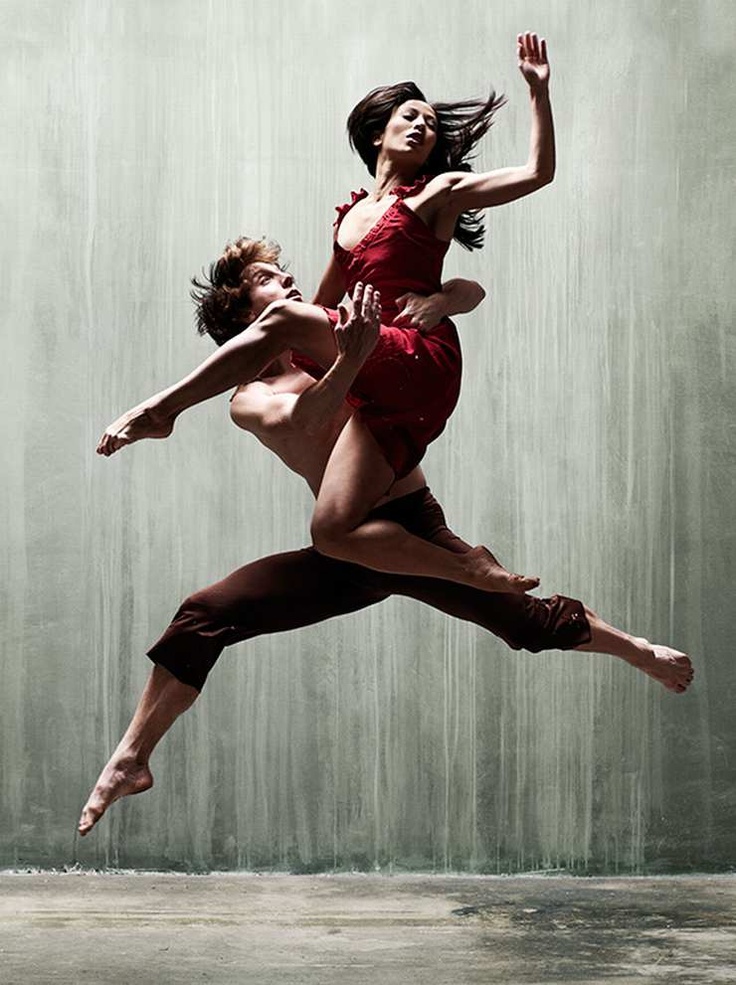
When she receives a sacada, she should be already on both legs with her body in the middle. As his body crosses her path and displaces her body, she needs to stay vertical and balanced on her support leg because a sacada will always provoke a rotation of her body over her support leg. Please, refrain from swinging the displaced leg like a scythe.
If executed gracefully, a sacada becomes the highlight of the dance; nevertheless, since it needs precise movement, it is one of the most difficult figures to teach, learn, and understand. When a dancer becomes overly focused on completing the sacada, the dancers risk injury and the beauty of the dance fades.
PasadaEndre Tango suggested that if you are receiving a sacada, be mindful of the timing and remove your leg a little later from where your partner placed it, rather than too soon. During the motion, think about stretching your leg and making space for your partner’s foot rather than about taking away yours. Once you do, remove your leg, then execute with a relaxed, bent knee.
In this way, one can avoid getting caught like a hook in each other’s feet.
Jenny & RicardoOria explaining a pasada
Improvisation is one of the best parts of a tango, and one figure that makes a sequence more exciting is when (usually) the leader performs a parada (or "stop") with his foot, leading the follower to turn sideways and elegantly step over the lead's extended leg, which is placed next to her standing leg, in the fourth move on our list, the "pasada."
A very unique figure in tango. Pasada literally translates to "stepping over" or "passing over", and it requires a deep connection between the partners to perform it successfully as it is a chance offered by the leader to the follower to add her own spice to the dance without force. It is frequently performed towards the end of a molinete or a mordida that leads into a forward ocho or barrida.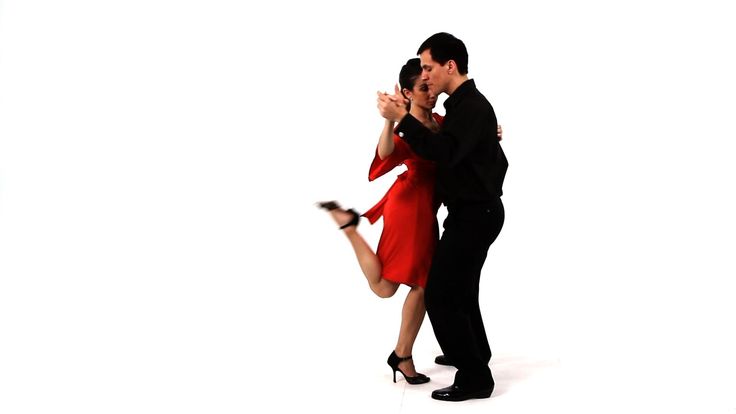
According to Tango Student,, there are three options for the pasada.
(1) Step over it regularly.
(2) Rhythmic Step: Follower takes a little 2" step back with the free leg, then a side step that clears the front of Leader's foot by an inch or two, opening up a channel for her to step through forward with her free leg (in this pasada, the Follower's step around lands in exactly the same place as if she passed over regularly -- i.e., close and around Leader). The timing of this pasada option is QQS.
(3) Big fan where Follower's foot fans out to touch the back of Leader's back foot.
All of these pasada options can be combined.
The leader shall lead the passada and not wait for the follower to do it.
However, there is a slight, though quite meaningful difference between passively waiting and giving the Follower space to fill up with her adornos.
Depending on the follower’s preferences she can do variations such as lustrada; she can raise her leg high or keep it low while passing over; done by the lead with his foot while the follower moves forward, passing over his foot and allows the follower to create an adorno.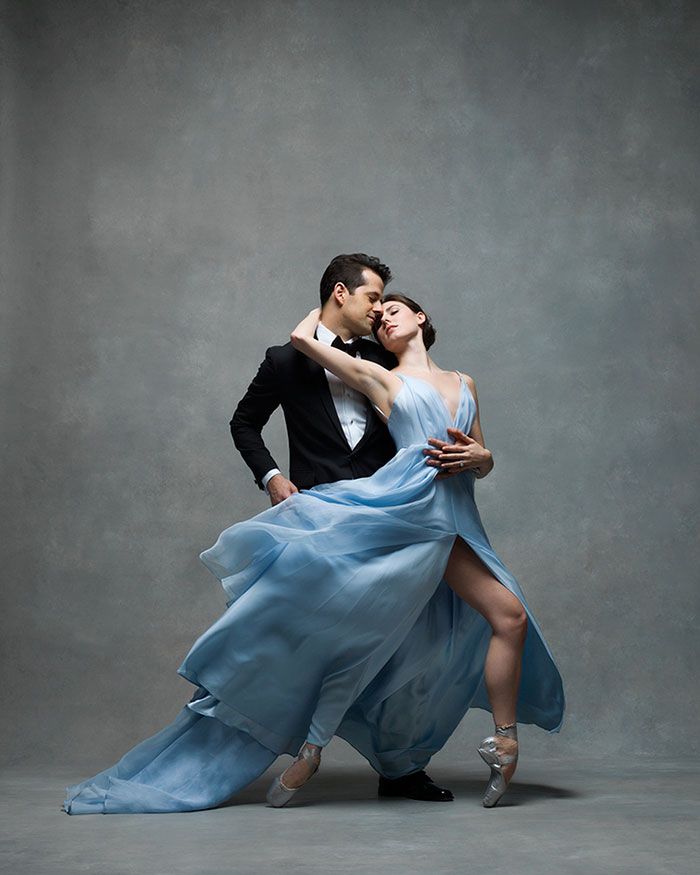
SanguchitoRemember though that those kinds of adornments shall not be done mechanically. Just like in life brushing against someone esle’s body - can be read for what it is - brushing again someone’s body. So use it when you mean it, not just because you think of it as a step.
Miriam Larici & Leonardo Barrionuevo demonstrate how to do the Sandwich
Last but not least, is the Sanguchito, which is referred to by so many names, such as Sandwich or Bite in English, or El Sandwich, El Sandwichito, El Sanguche, Mordita or Mordita (mor-DEE-tah is Spanish for tiny bite, or to clutch.)
A funny story associated with the origin of the name of this step, as written by Tango Argentino Rioplatnse, is that a milonguero who, during a tango party, "wedged" his partner's foot between his own feet, stopped the dance for a moment to take a sandwich out of his pocket, took a big bite (mordida) and shortly afterwards, resumed the dance!
There are several variations for Sanguchito and the most common sandwich sequence as per Tango Notes is:
Starting from back ochos.
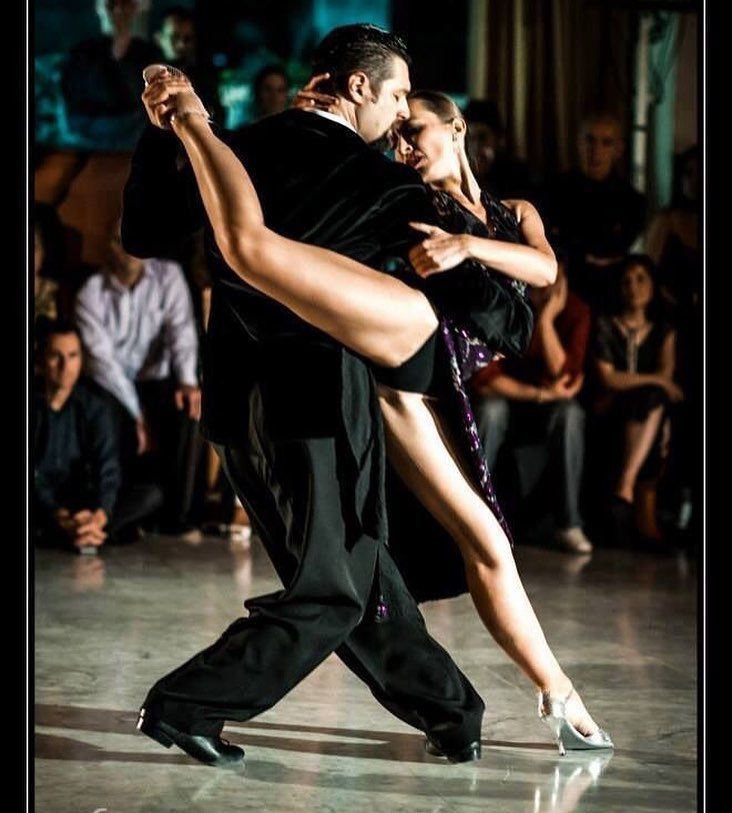
Leader's right foot paradas the outside of the follower's left foot.
Leader's left foot sandwiches the follower's left foot.
Leader's right foot crosses behind their left.
The follower's right is led to a stepover/pasada.
Learning Argentine Tango is not as difficult as it looks. It's like immersing oneself in an unfamiliar language one likes to learn nonetheless. To overcome language barriers, one should learn the complexity of language AND the culture of where it originates from.
When experienced dancers learn these steps by body and mind, it quickly becomes second nature to them, much like a second or third language. Inexperienced dancers, however, must first overcome ‘language’ barriers by letting go of their preconceived notions of Argentine Tango and immersing themselves in the dance.
True to human nature, words, whether written or spoken, regardless of the language they are in, with all of their complex meanings, are preserved in our minds. The analytical part of the mind requires the application of science. It focuses on what one sees, hears, touches, smells, and tastes. Intuition, on the other hand, might be disregarded as irrelevant, trivial, and even unscientific. It is the ability to think outside the box wherein no one can explain why one knows things that were not perceived as having existed in the first place.
The analytical part of the mind requires the application of science. It focuses on what one sees, hears, touches, smells, and tastes. Intuition, on the other hand, might be disregarded as irrelevant, trivial, and even unscientific. It is the ability to think outside the box wherein no one can explain why one knows things that were not perceived as having existed in the first place.
For this dance to be practiced and mastered, dancers must use their intuition and creative thinking to anticipate and coordinate their movements.
Tango reflects the fluidity of a person's mind—their thoughts, emotions, and abilities to understand and express themselves. The swaying represents humans' natural ability to communicate without using words or writing. The colgadas and volcadas performed off-axis, though still controlled, appear to be in a free fall because of their mastered communication, trust, and grace.
The Argentine Tango is a stress-relieving style of self-expression that allows dancers to let go of the rigidity inherent in scientific techniques and methodologies while uncovering their own creativity.
Tango relies quite a lot on scientific or mathematical techniques but also takes a desire to let one’s natural instinct be in control, which is innate and embedded in everyone’s subconscious since birth.
Argentine Tango is like a puzzle that gets put together differently each time. With so many ways to dance it, some tango dancers overdo it, adding more elements than it really needs. The beauty in Tango, In truth, lies in its outer simplicity and inner complexity.
After mastering the art of intuition and creative thinking, along with these five basic steps, all else will depend on the chemistry with a person you never knew existed, at least not until they begin to dance, which transcends any written and spoken languages.
Learn about Argentine Tango
Signup to get our most current articles, info about classes and events, and special deals!
Argentine Tango, Beginner Tango, Tango Knowledge, Tango performance, Tips for dancingAnita Flejtertango music, tango musicality, la cumparsita
0 LikesAbout training on the dance floor / Argentine tango school El Gato Tango
No need to learn on the dance floor! Men!
Assuming that just because you are leading, you know more violation of social dance etiquette.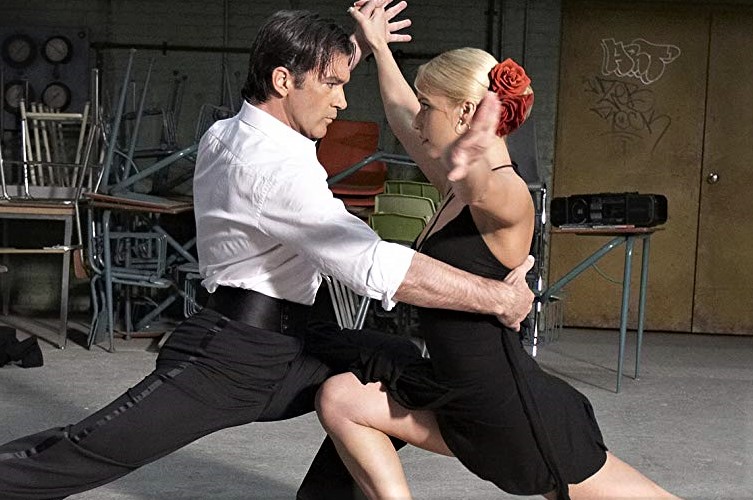
Ladies!
Don't be a critic or judge of a guy and his style/interpretation music. This is a social dance, not a workout. If - and only if - a lady (or gentleman) asks for it, you can use the area off the dance floor to verbally guide the lady through the step. If, while leading her, you cannot speak, then You don't know him well enough to teach!
If you are open to criticism, ask other dancers to help. Perhaps they see or feel what you don't feel. During the dance, you can talk, you this is the time you can learn something more valuable than where your partner is from. There are people who do not plan any lessons. To become the best dancers they rely on tangibly made offers, informal lessons on breaks and experience.
The dance is amazing in interaction. He can make you friends with many - or maybe isolate you from the very people with whom you would like to communicate.
Here are some rules on the dance floor:
- Don't teach on the dance floor unless you're asked to.
 Unsolicited advice is not only bad manners is unacceptable behavior.
Unsolicited advice is not only bad manners is unacceptable behavior. - Don't criticize your partner, no matter how much you want to. Your job is to make the dance feel better from YOUR side. And the only person who really you can change - it's you.
- Don't criticize yourself out loud, no matter how much you want to. It's not nice to have a partner with whom I just had a dray dance, and she apologizes and notices that she need to do more. Sometimes this happens after a few mistakes, and usually - with poor management. Or I led them successfully through unfamiliar things, but they followed nicely.
- Dance at the level of understanding your partner to the maximum of your abilities. Get FUN in 3-minute communication. Make your partner to enjoy. Put JOY into the dance and share joy with every partner.
Dancing is a social activity, so etiquette outweighs everything else. Classes and training is one thing, dancing in public is another.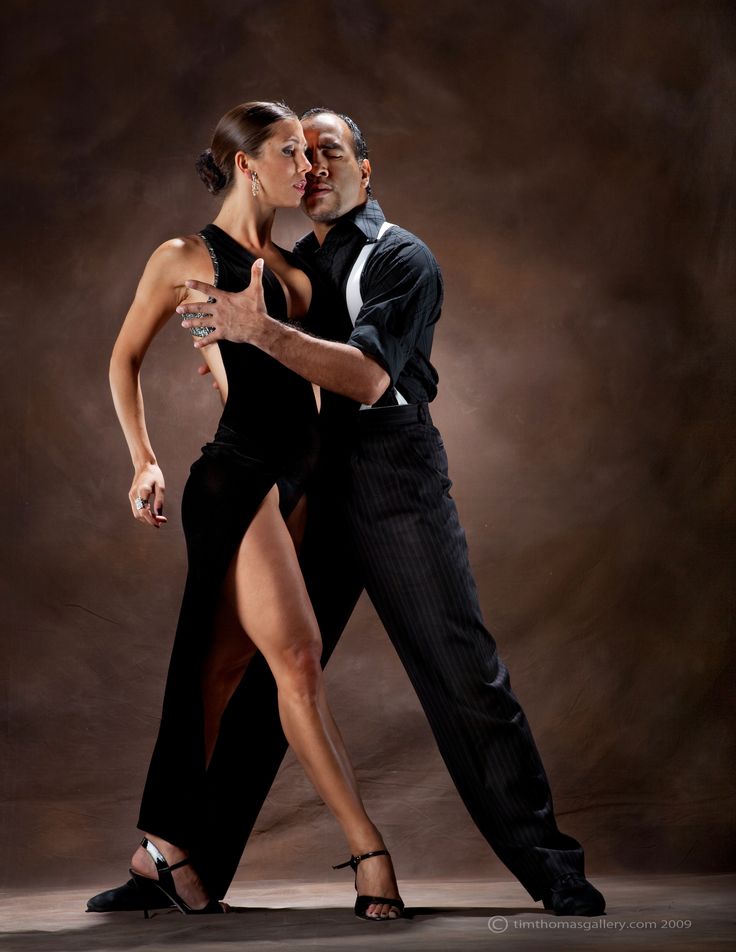 We all know people practicing a routine in public or practicing a samba lesson right on the dance floor, while the orchestra plays the waltz. It's impolite, even insulting to other dancers on the floor. A more pressing issue is impoliteness to one's own partners. I know guys who teach everyone and can't STOP. I do not know, why they do this, but they annoy many partners with this. (What about partners leading back all the time - or giving advice?) Remember, many people don't so "turned" on the dance. From time to time they just like to spend several hours, moving to the music and having fun. They don't care correct steps or proper technique, lines of dance and the like. We must first figure out who you are dancing with, what their abilities and preferences are.
We all know people practicing a routine in public or practicing a samba lesson right on the dance floor, while the orchestra plays the waltz. It's impolite, even insulting to other dancers on the floor. A more pressing issue is impoliteness to one's own partners. I know guys who teach everyone and can't STOP. I do not know, why they do this, but they annoy many partners with this. (What about partners leading back all the time - or giving advice?) Remember, many people don't so "turned" on the dance. From time to time they just like to spend several hours, moving to the music and having fun. They don't care correct steps or proper technique, lines of dance and the like. We must first figure out who you are dancing with, what their abilities and preferences are.
No matter how well or how badly I dance, my mission is to dance floor alone.
To give the lady who agreed to dance with me pleasure for the duration of our a short dance meeting. This goal must be mutual. If you have some other task on the public dance floor, reconsider your motives. Not you have to prove how wonderful you are, how amazing you look and how much better you are than your dance partner. In a social situation, you dance with by your partner and for him. There is a time and a place to study, but not in the middle public dance floor during a public dance, even if it is very necessary! Refrain from this. Consider it impolite. Very impolite. If the dance is new partner does not suit you, you need to endure him until the end of the dance and say "Thanks!" It is not your duty to give a critical analysis of his/her dancing abilities, even if you really want to.
If you have some other task on the public dance floor, reconsider your motives. Not you have to prove how wonderful you are, how amazing you look and how much better you are than your dance partner. In a social situation, you dance with by your partner and for him. There is a time and a place to study, but not in the middle public dance floor during a public dance, even if it is very necessary! Refrain from this. Consider it impolite. Very impolite. If the dance is new partner does not suit you, you need to endure him until the end of the dance and say "Thanks!" It is not your duty to give a critical analysis of his/her dancing abilities, even if you really want to.
Pre-competition training, seminars, mutual aid meetings, wherever go for the sole purpose of learning or improving is a completely different case. It is clear that in such obvious learning situations, suggestions and soft constructive criticism of your dance partner. If you are not capable of this kind of calm, gentle and constructive criticism, let them deal with it others who are more capable.
Dancing should be fun. Don't worry if you "failed and spoiled figure." Do what you can and enjoy what you do. Agree in advance with partner that you put PLEASURE in the first place. Don't make a problem out of each other's mistakes those that you did in the ballroom are an indication of what work later.
Brandon Stone - Goddess in Red lyrics
View all Brandon Stone lyrics Goddess in red you are so beautiful
Dancing Rumba Salsa Tango
Let's forget what distance is
Dancing Rumba Salsa Tango
Goddess in red you are so beautiful
Dancing Rumba Salsa Tango
Let's forget what distance is
You are so sparkling
Forgetting everything
In her red dress
Let's take off your heels and run
Burn the dance floor with your movements
You dance Rumba Salsa Tango
Goddess in red you are so beautiful
Dancing Rumba Salsa Tango
Let's forget what distance is
Music flows in your veins
Accelerates the pulse and sings
You are the goddess of all evenings
Let's start dancing
The dance floor is waiting for you
The scent of your train magnet
He beckons beckons beckons beckons
You are so so so alone
You keep driving everyone crazy
You dance Rumba Salsa Tango
Goddess in red you are so beautiful
Dancing Rumba Salsa Tango
Let's forget what distance is
Dancing Rumba Salsa Tango
Goddess in red you are so beautiful
Dancing Rumba Salsa Tango
Let's forget what distance is
Let's forget what distance is
Did you like the lyrics?
Leave a comment below
Correct lyricsSee all Brandon Stone lyrics Share a link to the text:
Text rating:
- Text-pesni.
 com
com - B
- Brandon Stone
- Goddess in Red
Popular lyrics and translations of songs by Brandon Stone:
For love
Brandon Stone
Love yourself
Brandon Stone
You are the sky (Brandon Stone)
Brandon Stone
Aircraft Baku-Moscow (ft. Eyyub Yaqubov)
Eyyub Yaqubov)
Brandon Stone
My love is with you forever
Brandon Stone
Popular lyrics and song translations:
Silhouette (Miyagi, Silhouette)
Miyagi & Endgame
LP (ft. Milana Star)
Milana Khametova
Vredina (Bakr)
Bakr
Night (Miyagi)
Miyagi & Endgame
Tell me / Asa du
JANAGA
Black Love (ft.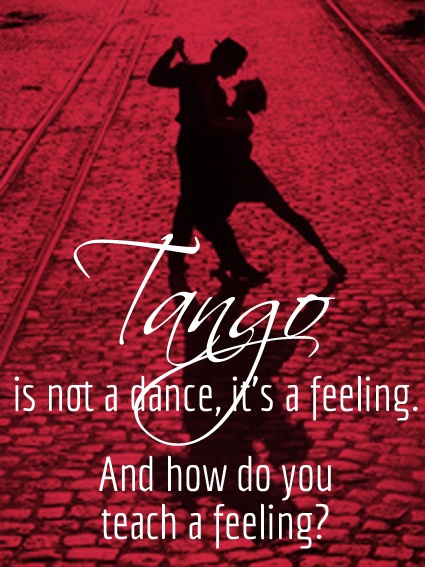 MONA)
MONA)
ELMAN
Your gentle gait (That winter is not far off)
Timur Mutsuraev
A blue tractor is coming towards us (Across the fields across the fields)
Children's songs
Hands Up (ft. DNCE)
Merk & Cremont
Need Me (Miyagi)
Miyagi & Endgame
Best lyrics and translations of songs:
Shine (Ramil)
Ramil'
Wildly partying (ft.
